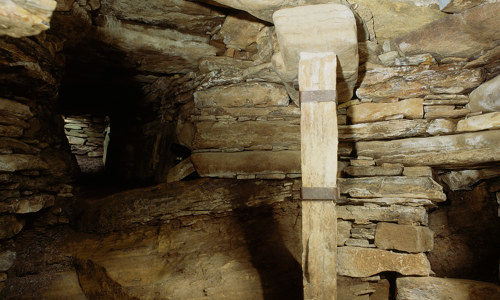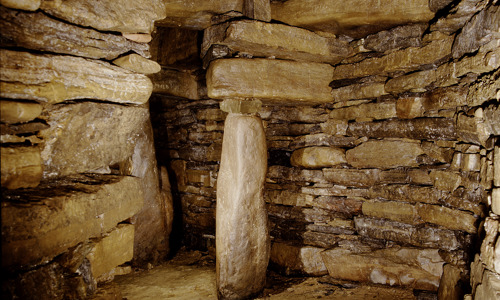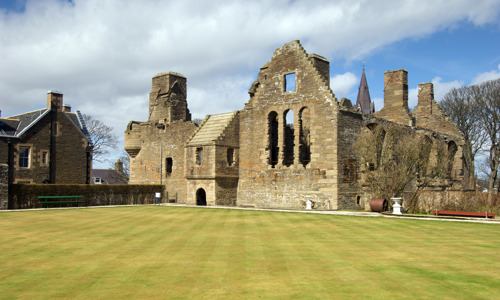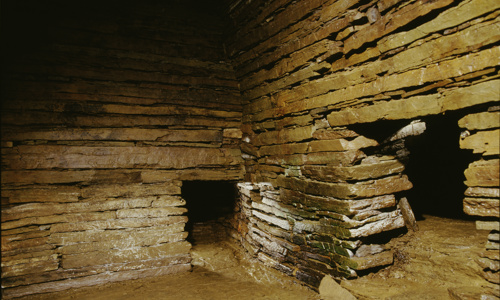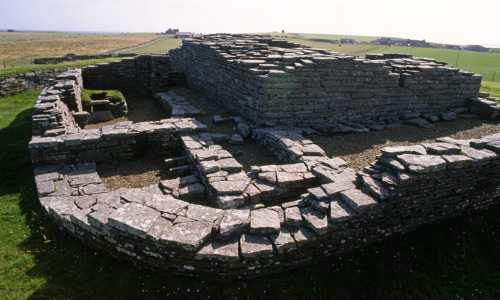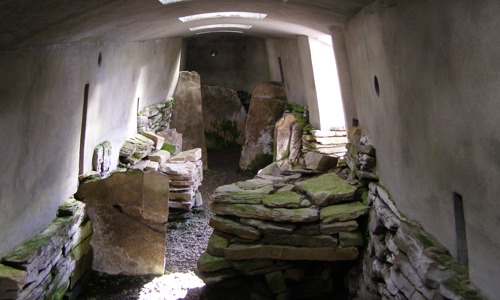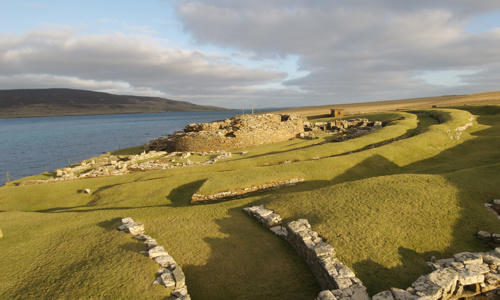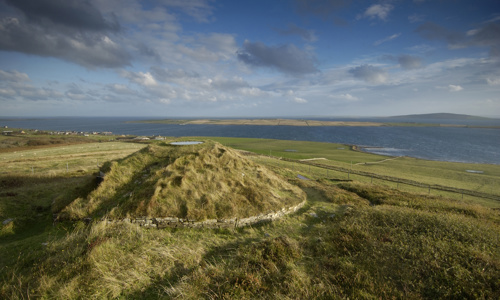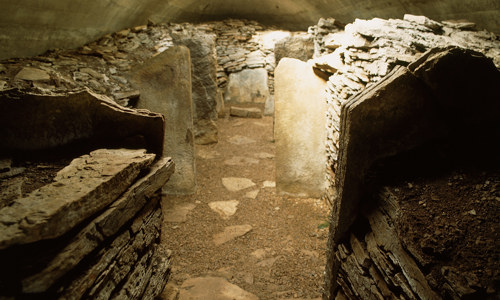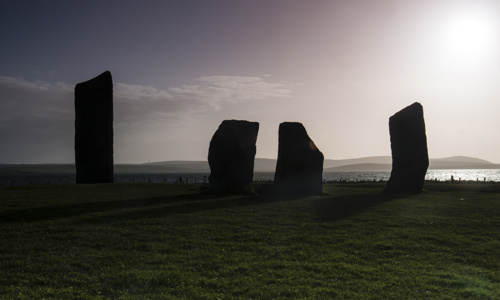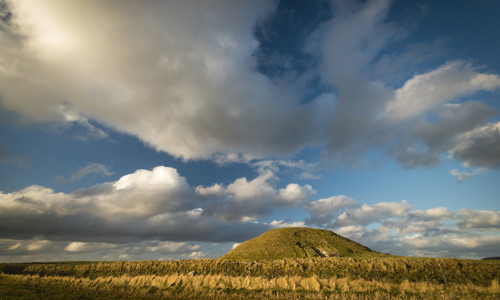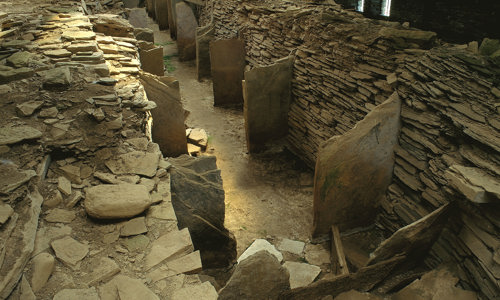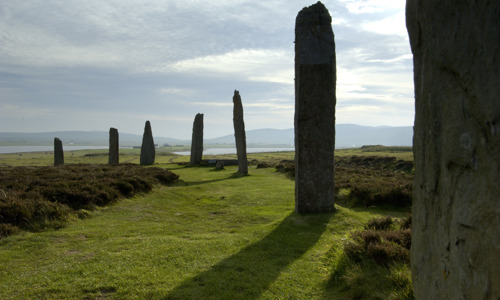History
Wideford Hill Chambered Cairn was first built some 5,000 years ago on an artificial terrace on a steep hillside. It’s placed in a conspicuous location with views out across Wide Firth and other Orkney islands. The nearby Cuween Hill chambered cairn is also visible.
The cairn was intentionally in-filled during prehistory, though when and by whom is unknown. Unfortunately, it had been opened and robbed of any contents before any antiquarians were able to investigate it in the 1800s.
It’s a fine example of a chambered cairn. Its layout comprises:
- a narrow entranceway
- a central chamber, with side walls reaching almost 3m in height
- three complex side cells
Today entrance from the cairn is no longer through the low, narrow passage. Vistors now enter by descending through a modern roof.
In and around the cairn
Wideford Hill is a fine example of a type of chambered cairn found in Orkney. It demonstrates the architectural expertise of Neolithic society and the great effort that must have gone into the construction of such monuments.
It has a high central chamber, with three side cells leading off it. The central chamber is well built, with the side walls reaching almost 3m in height. Part of the original roof survives and the large lintels forming the passage’s roof and the cells were constructed with architectural expertise. The form and architectural techniques used here are similar to Maeshowe.
On the tomb walls we can still see rare examples of Neolithic scratch art. The presence of such imagery reinforces the relationship between tombs such as Wideford Hill and contemporary settlements, such as Skara Brae, where similar marks have been found.
Excavations at the base of the hill have discovered the remains of a probably contemporary settlement. This strengthens the links between tombs and settlements in Orkney, reminding us that tombs did not stand alone in the prehistoric landscape.


